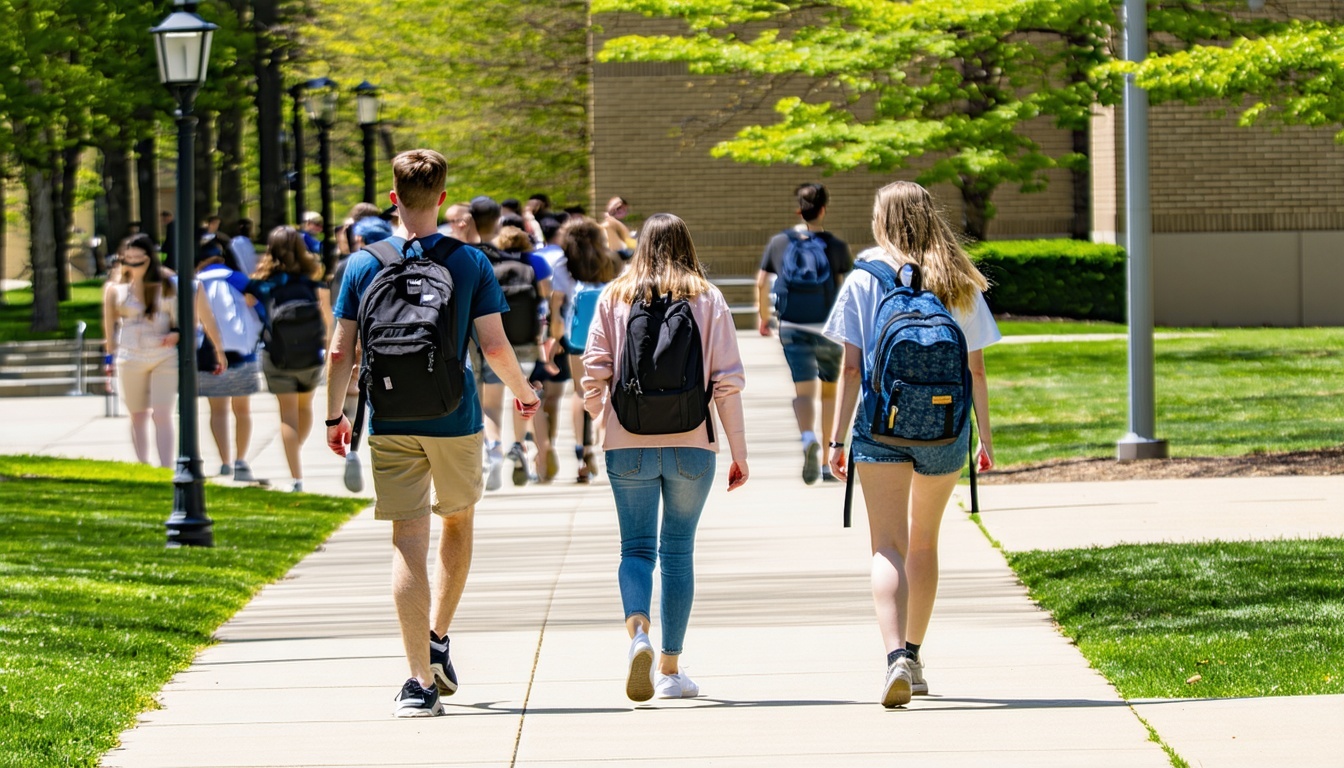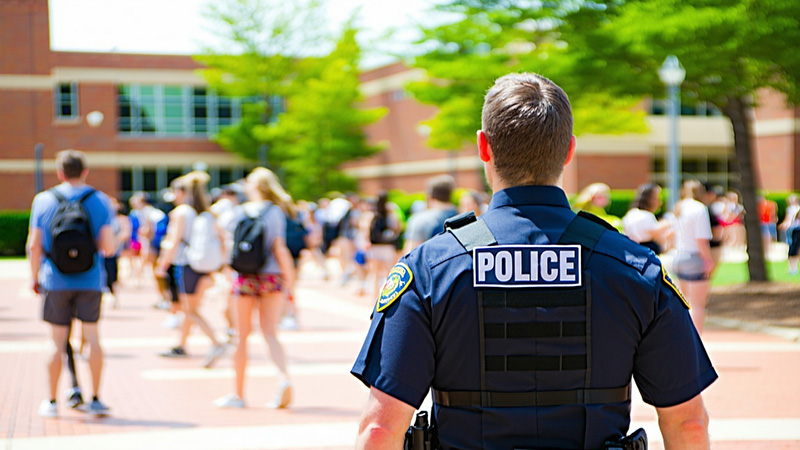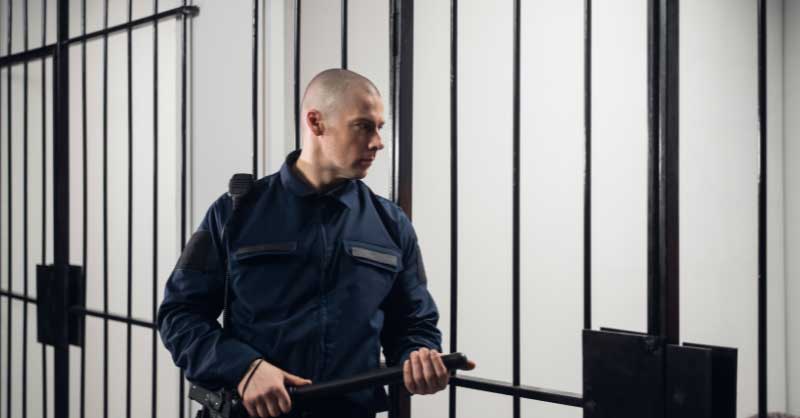Real-time visibility. Smarter coordination. Safer outcomes.
Active shooter incidents on college campuses are a growing threat. In just the last three years there have been five confirmed shootings at U.S. universities including the recent tragedy at FSU.
For public safety and campus security leaders, events like this put a magnifying glass on campus security, forcing them to take a good look at their emergency preparedness strategy. Today, this strategy needs to go beyond lockdown drills. It needs to address speed of communication, quality of coordination, and the accountability the college is able to carry forward.
One tool alone won’t solve everything, but the right mix of technology can change how you respond, how you learn, and how your institution recovers.
Body-worn cameras (BWCs) are increasingly being used by higher education institutions to respond to threats, review critical incidents, and reduce future risk, a trend that's gaining momentum on college campuses as demand for body-worn cameras in higher education continues to grow.
Real-Time Visibility for Smarter Decisions
The nature of an active shooter event is one of chaos. The ability to establish an organized response is critical.
Modern body cameras used in higher education have WiFi or 4G connectivity to provide live video streaming, GPS location tracking, two way communication, and panic alert activation. This allows command staff to view what officers see as it happens, providing immediate situational awareness. That clarity helps direct backup, choose safer entry points, and confirm the shooter’s location faster and with greater confidence.
Visibility starts before the video feed. That’s where panic alerts can be critical. Many campuses are now equipping safety personnel with a built-in panic alert feature.
With a single tap, an officer can silently trigger:
- A real-time location alert
- Automatic recording
- Instant notification to dispatch or command
That means:
- Command sees what officers see.
- Decisions happen with facts, not guesswork.
- Entry teams get guided in, not just sent in.
Every second counts. And seeing the scene in real time can mean saving lives.
In a situation like Parkland in 2018, where confusion about the shooter’s location and communication slowed the response, key features like live-streaming, two- way communications, and GPS tracking from a body camera activated by a panic alert integrated with the local police could have helped narrow the window between incident and intervention.
Improving Campus Officer Tactics
High-pressure situations don’t just test officers, they test your systems and your strategies.
Body cameras provide more than just documentation. They capture tactics in real time, allowing safety leaders to assess how officers moved through buildings, what decisions were made, and whether training protocols held up under stress.
Footage also gives trainers the tools they need to identify blind spots and reinforce best practices. Over time, it builds a smarter, more prepared response team.
- Document officer movement and decision-making in real incidents.
- Assess how well training protocols hold up under pressure.
- Reveal blind spots and improve tactical drills.
Campus Safety Accountability and Transparent Response
In the aftermath of any campus tragedy, questions come quickly and campus safety is expected to respond in detail.
- What was known, and when.
- Who acted, and how.
- Whether safety policies were followed — or failed.
Body-worn camera footage helps provide clear answers. It allows institutions to respond with accuracy rather than speculation. It gives families and communities visibility into how decisions were made, and supports the trust that’s needed when tensions are highest.
For college and university leadership, transparency shows the public that your institution leads with integrity.
Campus Security Training with Real-World Footage
Simulation training is important, but real footage changes the game.
Body cam video allows safety leaders to walk officers through real scenarios that happened on their own campus or others. They can study movement, timing, communication, and recovery, not just theory but in practice.
Departments in cities like Las Vegas have used footage from mass shooting responses to improve drills and inform policy. Higher education institutions are starting to do the same using footage to update active shooter training, enhance after-action reviews, and guide department-wide debriefings.
Preventing Campus Violence with Proactive Body Cam Use
Body cameras aren't just for crisis response. They help detect warning signs, too.
Routine patrol footage can be reviewed by behavioral assessment teams. Officers can flag early signs of distress, aggression, or isolation. That kind of documentation adds depth to incident reporting and can support early intervention before someone becomes a threat.
- Review early interactions with distressed students.
- Flag signs of violence-in-the-making.
- Connect behavior with threat assessment teams
Trust is built not only in response, but in prevention. Body cameras play a quiet, consistent role in both.
A body camera doesn’t stop the shooter. But it can bring clarity when it matters most.
Body-worn cameras weren’t built to sell fear. They were built to bring clarity when fear takes over. They won’t stop an active shooter, but they can make your response more precise, your leadership more transparent, and your institution more prepared.
With tools like panic alert triggers, GPS, two way communications, and live-streaming, HALOS body cameras are helping colleges be more proactive and reduce vulnerabilities.
Explore HALOS for Campus Security
At Criswell College, campus security leaders implemented HALOS body cameras to enhance officer accountability, improve training, and strengthen campus-wide trust. Read how they’re using HALOS to bring transparency and structure to their daily operations and long-term planning.
If you're updating your emergency response strategy, we're ready to help you build it right.



